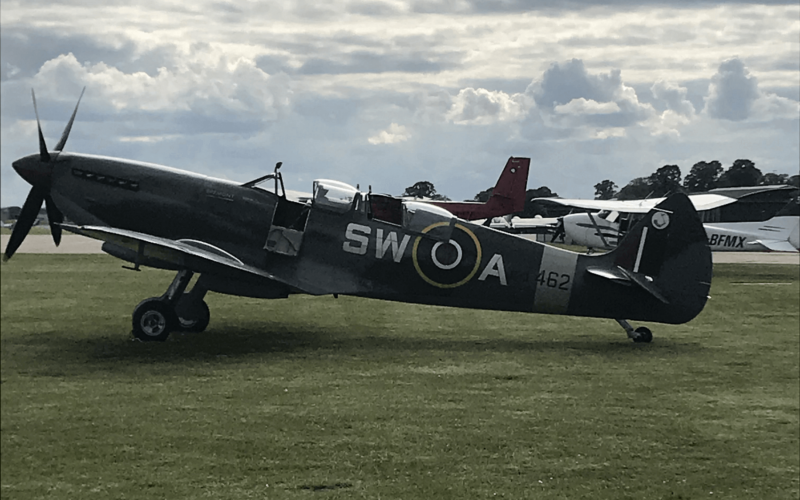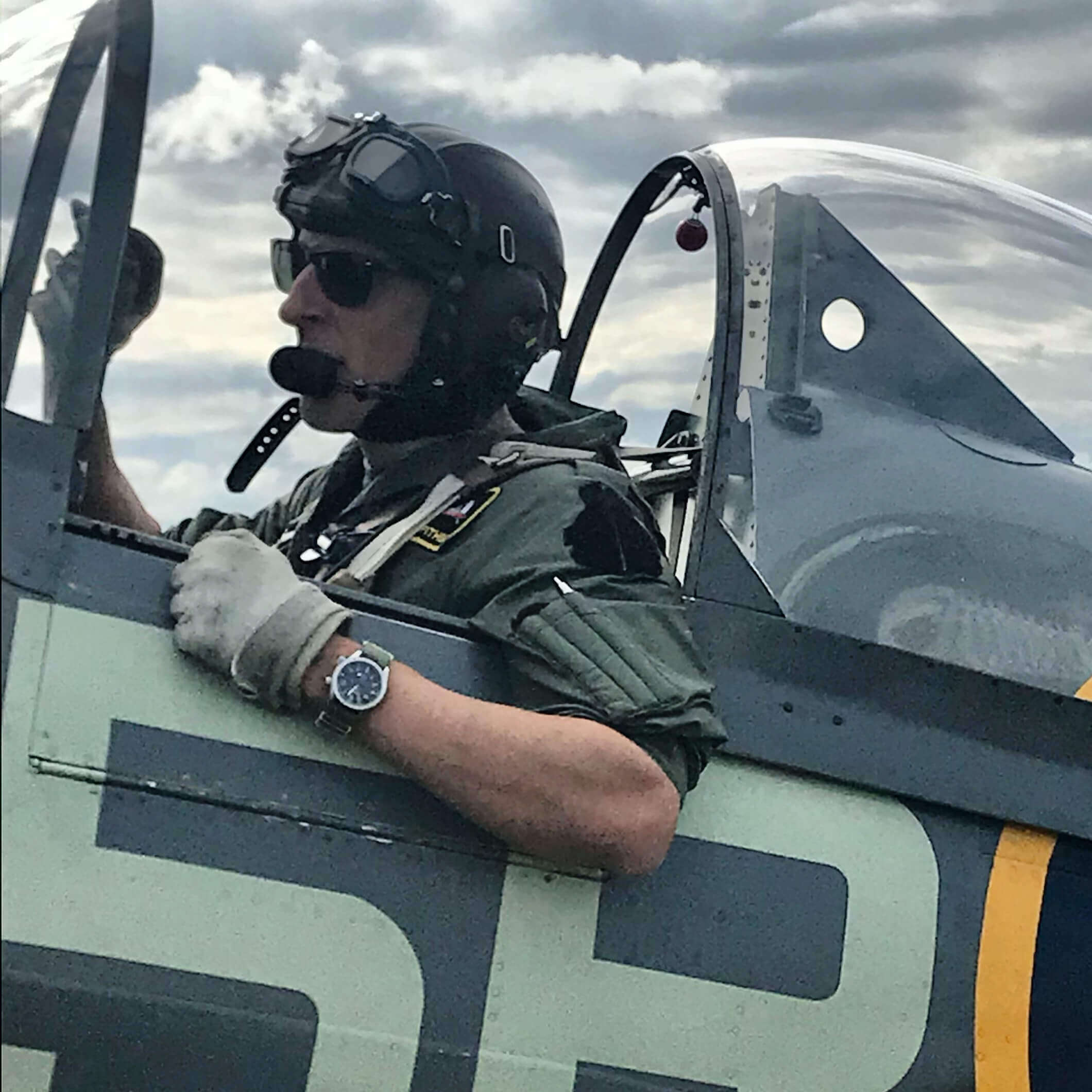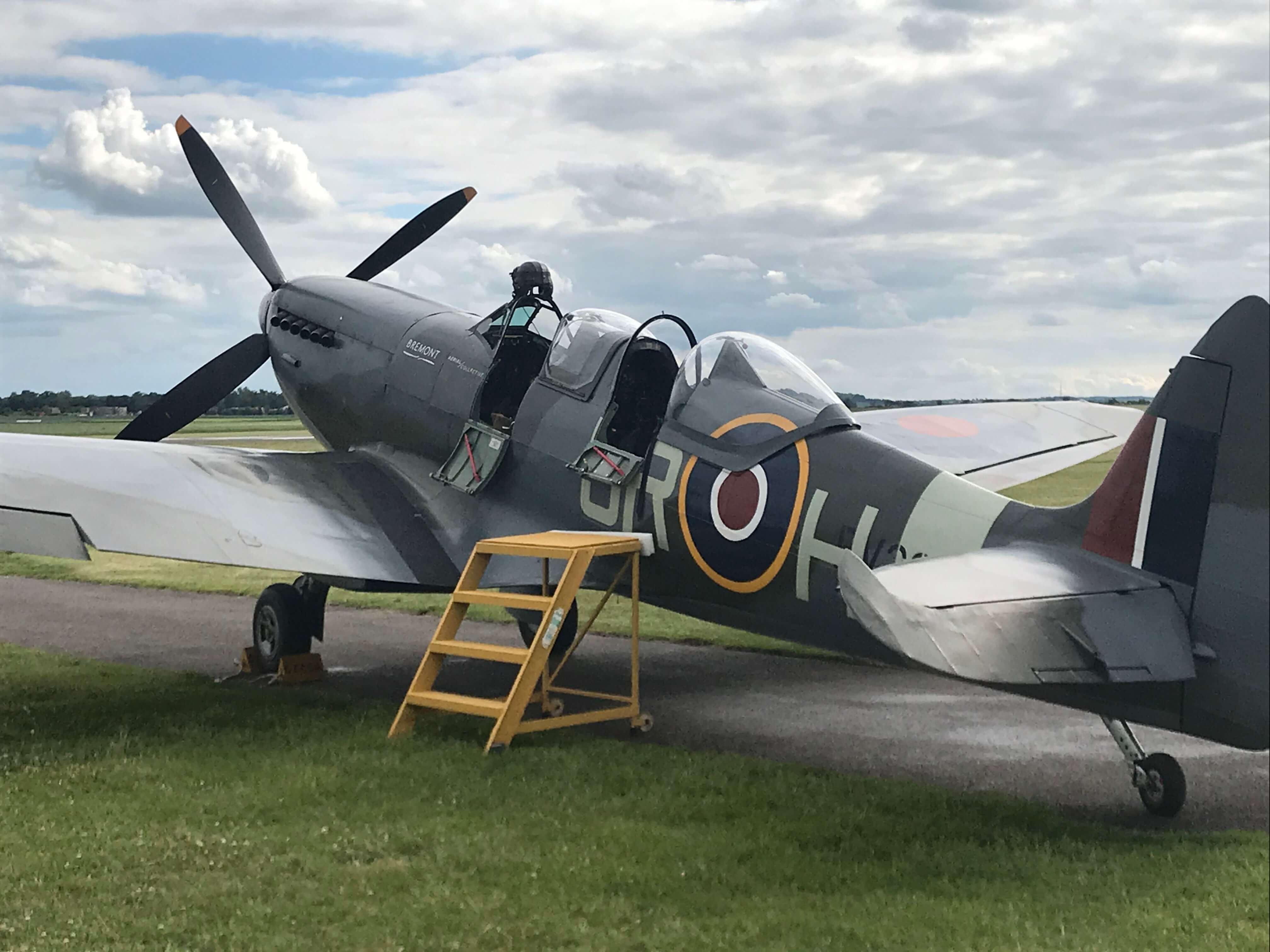I can scarcely remember a time when the Spitfire wasn’t part of my life in some tiny but meaningful way. Supermarine’s creation remains the stuff of childhood dreams, her very name loaded with emotion and sacrifice, power and awe. Iconic is an overused word in aviation writing, yet for this famous British fighter aircraft, few other words suffice.
Growing up, I read as many biographies of Spitfire pilots as I could find. Like many children of my generation, I built countless Airfix kits, stringing the models from my bedroom ceiling and staring at them as I lay on my bed, wondering what it would feel like to fly one. I studied the aircraft’s beautiful form and knew every detail of her elliptical wings, Merlin engine and cockpit controls. Obsessing about the Spitfire felt a lot like unrequited love. But then one day, I finally got to fly her.
Having written about aviation for many years, in 2012 a then-rare opportunity arose to take to the skies with the Aircraft Restoration Company based at Duxford, a former Royal Air Force fighter station, which received the very first Spitfires delivered to the frontline. ARC is world-renowned for its skill in returning historic aircraft to flight, including many Spitfires. I had already been astonished to be invited to sit in an incredibly rare Mark 1 Spitfire, which ARC engineers had rebuilt from a wreckage dredged up from a French beach. Now I would be climbing aboard PV202, a two-seat Tr.IX model built as a single seater in 1944 before being converted post-war with dual controls added. The anticipation was almost too much to bear.
Years later, I remember little about that first experience, save for the incredible power of the Merlin and the sight of England’s green fields as I looked across the wings with their red and blue roundels. Thankfully, I have a set of superb photographs taken by a photographer from the newspaper I was working on at the time. The smile on my face in those pictures is priceless. I grinned for days afterwards. But what I do recall clearly is an overwhelming sense of emotion as we performed a victory roll over Duxford; my entire family there to watch me fulfil a dream. And, as we were upside down over the field, I was able to look up through the canopy and see them frantically waving from the ground below.
Just when I thought a once-in-a-lifetime experience would remain a one-off, I was generously offered another flight in the same aircraft. A decade on, with many more hours of taildragger time in my own logbook and a determination to make the most of the experience, I prepared myself fully. I went to fly a Harvard, the Second World War training machine on which most Spitfire pilots learned to handle heavy piston-engined warbirds. It was a worthwhile exercise and filled me with confidence for the flight ahead.
On the day I climbed back into PV202, I felt instantly at home as my hands fell back onto her controls. Flying with Lee Proudfoot, one of the UK’s most experienced air display pilots, I was delighted when he handed me control straight after takeoff, as the wheels clunked up into their bays. He generously allowed me to fly the entire trip right up to final approach.
Surprisingly, my own Chipmunk has nicer handling controls than a Spitfire. The faithful Chippie is renowned for its well-harmonized controls, which means the forces are the same whether you’re moving the stick left or right, forward or back. In contrast, the Spitfire feels twitchier in pitch, although she rolls beautifully. This manifested itself in my ham-fisted attempts at aerobatics. I was pulling too hard and loading us up with G-force at the bottom of loops. Be gentle, that elevator is sensitive! With practice I’m sure the ‘feel’ would become second nature, and each maneuver was improving as we danced around the skies.
Starting up the Spitfire is always an experience. The Merlin thunders into life with a huge cloud of exhaust which stings your eyes and throat as it envelops the cockpit, fire often spurting out of the stubs as the V12 engine crackles and rumbles. Once the canopy is closed the sound is more subdued – at least until takeoff. Although modern operators of the Spitfire do not push the rpm up to full power to preserve the engine life, there is still a pronounced kick up the backside as the throttle is advanced. The sensation is of being pushed back into your seat as the aircraft accelerates. And it just keeps building as you race across the grass. And then that blissful moment as lift takes hold and your Spitfire is back in her element, soaring into the blue where she belongs.
There are few things as pleasurable as carving turns in a Spitfire, guiding her through the air with a mere finger and thumb on the spade grip of the control column and looking out through the unrestricted view of the bubble canopy. I defy anyone to feel unemotional as the mind inevitably wanders to what this aircraft represented to so many people around the world. The Hurricane registered more kills during the pivotal Battle of Britain. The Mustang took the Allied fight into the heart of Nazi Germany later in the war. But for many, the Spitfire remains the conquering image of freedom, symbolising the memory of those brave young pilots of all nationalities who flew her into combat and the ground crews who dedicated themselves to maintaining her.
All too soon it’s time to land back at Duxford and we set up the aircraft for the approach, coasting around behind the Imperial War Museum for the right base to land. With the Spitfire’s long nose, it is impossible to see straight ahead, so we fly a continuous curve to improve the view, relying on peripheral vision to judge the touchdown. We make a tiny bounce as the undercarriage absorbs the impact and then allow the aircraft to slow down on the rollout. No danger of putting her on her nose if you don’t resort to braking heavily. Taxiing back to the ARC hangars, I roll back the canopy, resting my arm on the side of the fuselage and drink in the views and sensations.
Every Spitfire flight is unique and these days it’s possible to buy the experience for yourself. I can’t recommend it highly enough. Life never seems quite the same once you’ve flown a Spitfire.
With thanks to John Romain, George Romain, Lee Proudfoot, and Jack McBride.




